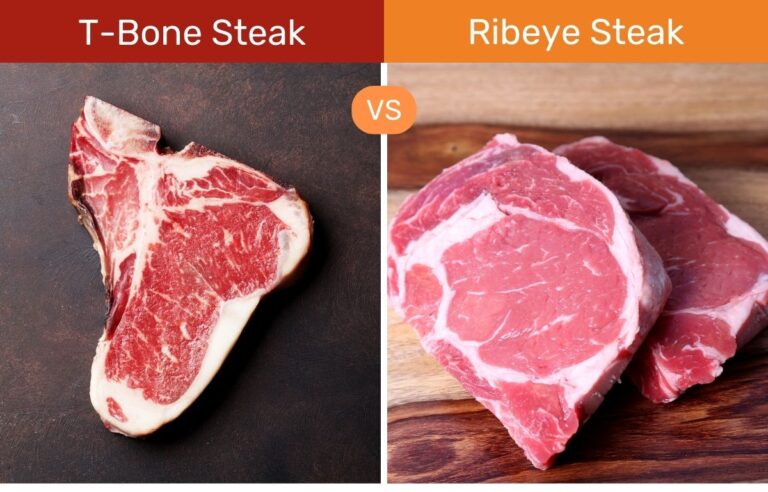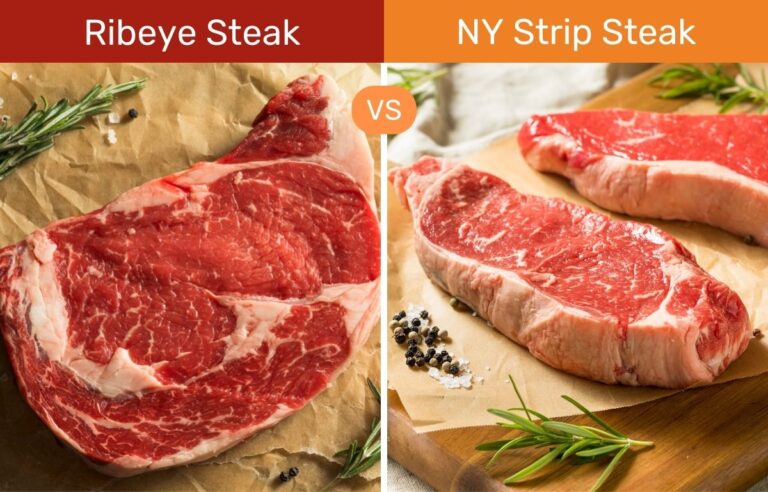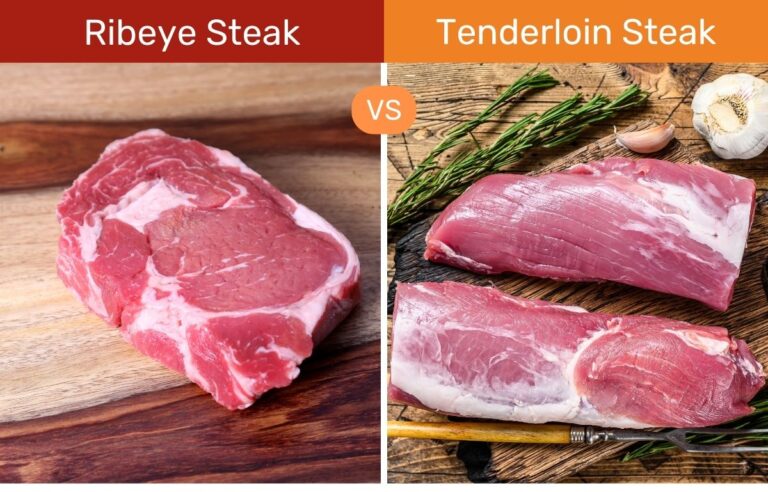Tri Tip Vs Brisket – What Are The 7 Primary Differences
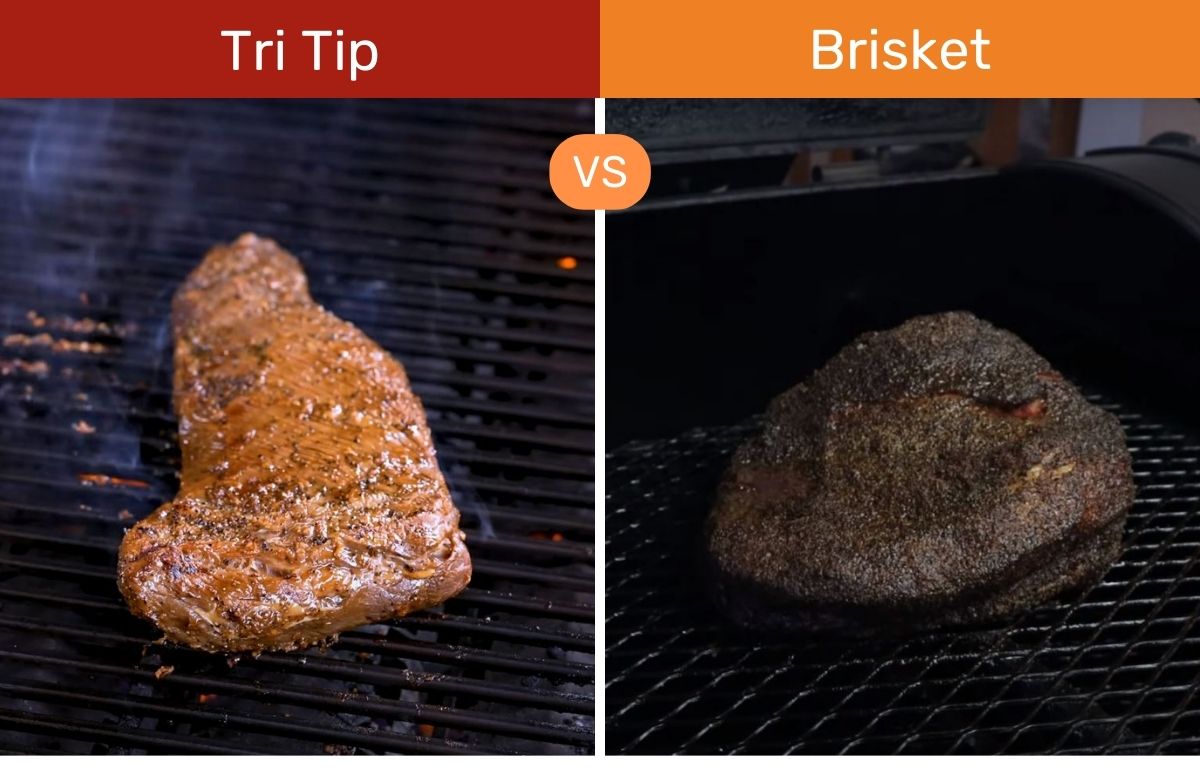
FaveGrills is reader-supported. If you purchase by clicking a link on this page, we may earn an Affiliate Commission at no extra cost. Learn more
So, you are ready to fire up your smoker or grill for tonight’s dinner but are unsure whether to cook a tri-tip steak or a beef brisket. Worry not. You’ve landed at the right spot where you’ll find all the necessary information regarding these two beef cuts.
First things first, both of these meat cuts have several exceptional characteristics that make them perfect in their own way. But which one is better and more suitable for your cooking preferences?
This is what you’ll come to know in this detailed tri-tip vs brisket comparison. So, allow me to kick off this productive article and help you understand which meat should be cooked over your fired-up grill or smoker tonight.
Looking for a Topline Answer?
Tri-tip is a leaner meat cut with moderate marbling and you can cook it through smoking and grilling in a relatively shorter period.
Conversely, a brisket is more tough and large meat cut with plenty of marbling, which is why it is more suitable for smoking and requires a longer cooking process.
Tri-tip vs brisket – A Quick Overview
Both tri-tip and brisket are popular beef cuts among BBQ enthusiasts for their unique qualities and delicious tastes. However, you’ll encounter multiple vital differences that will set them apart.
Firstly, a tri-tip is a leaner cut of meat with an average marbling over its surface, and you can cook it relatively faster than brisket, whether on a grill using high and direct heat or on a smoker using low and slow temperatures.
On the other hand, brisket is a large, tough, and thick cut of meat with plenty of marbling. That’s why it takes several hours to cook properly.
The ideal cooking method for brisket is low and slow smoking because it provides constant lower heat to break down the tough connective tissues inside it effectively.
If I talk about the cooking duration, a tri-tip would be ready to serve within 30 minutes to 2 hours. But depending on the meat’s size, cooking technique, and temperature you cook at, the estimated time may change.
Conversely, a brisket can take 10 to 20 hours or maybe more depending on the same factors, meat’s size and smoking temperature.
For example, smoking a 10 lb brisket at a suitable smoking temperature of 225 degrees Fahrenheit will require around 15 to 20 hours.
Lastly, a perfectly grilled tri-tip promises a tender texture, an intense beefy taste, and flavorful meat, much like a steak.
In comparison, a smoked brisket offers a melt-in-your-mouth experience, rich smoky flavor, and maximum juiciness inside.
Breaking Down a Tri-Tip
Firstly, this meat cut has other popular names among BBQ lovers, such as Triangle steak, Newport steak, California cut, Bottom sirloin butt, and Santa Maria steak. So, you don’t need to confuse them as they all refer to the same beef cut.
This is a triangular meat cut from the cow’s bottom sirloin, which is a section of the larger primal sirloin. Additionally, the sirloin is positioned in front of the round primal at the back of the cow.
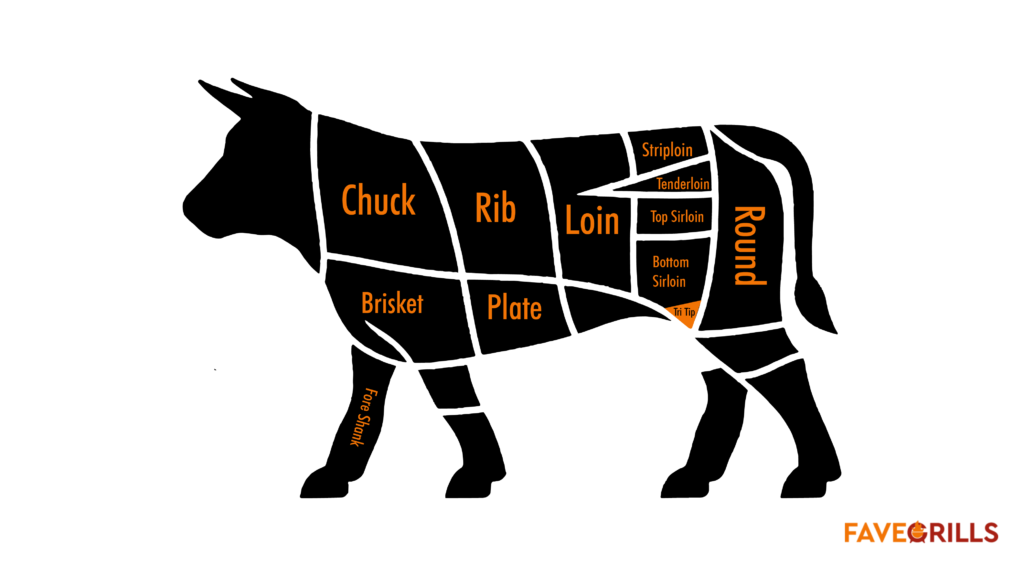
A raw tri-tip consists of an average amount of marbling, usually found on one side of the meat, but its grain runs in two different directions, which is pretty unusual.
Also, it is always boneless, which makes it different and similar to other steaks at the same time.
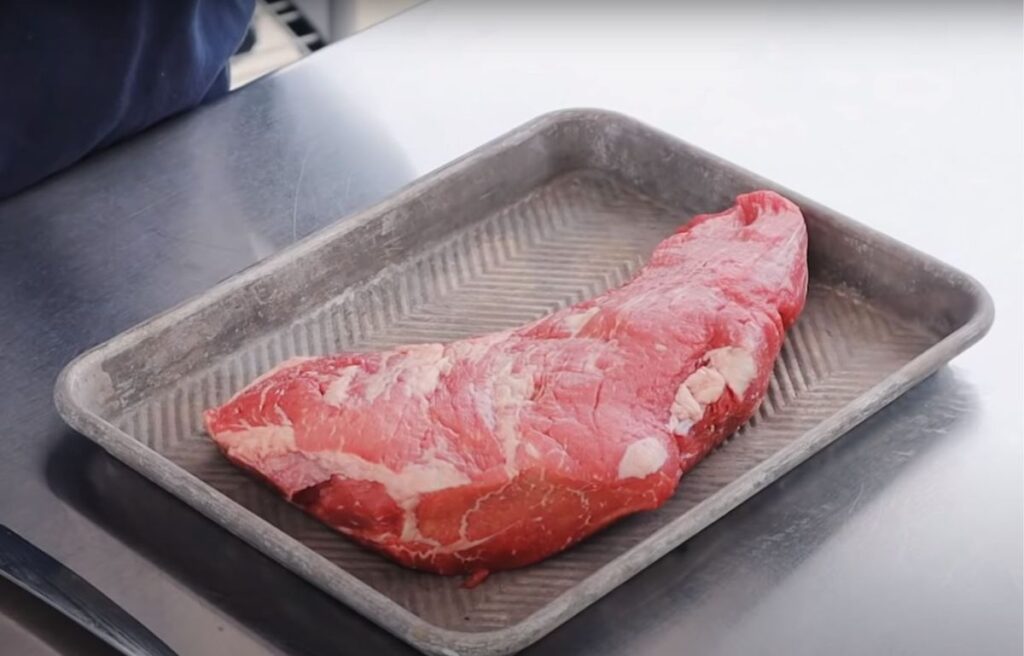
As mentioned earlier, it is more suitable for high-heat cooking, such as grilling, because it is a leaner meat cut with less fat cap and tough connective tissues, which means it can cook faster and stays tender during the cooking process.
However, if you want to add an extra layer of smoky flavor, you can also prepare it through smoking. Keep in mind that smoking the tri-tip would require more time, patience, and effort compared to grilling.
In summary, it is a versatile meat cut of beef which you can prepare through smoking or grilling, depending on your cooking preferences.
For example, the level of smoky flavor you desire, the time you can spend cooking it, and the desired tenderness and texture of the meat.
Recommended Reads: As tri-tip is a kind of steak, you might like to read our other steak comparison guide to discover more about these kinds of meat cuts.
Beef Brisket: An In-Depth Analysis
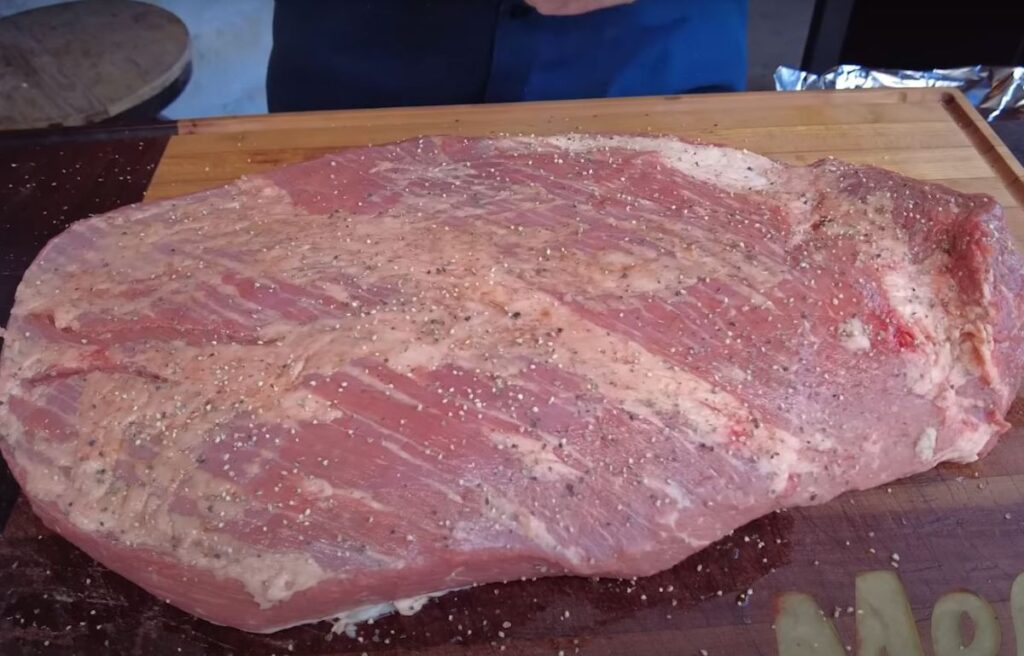
It would not be wrong to say that beef brisket shines as the most popular meat among hundreds of thousands of meat cuts mainly because of its rich flavors, delicious taste, and maximum tenderness and juiciness.
But if you are a complete beginner and reading this, sorry to say, but it is not the ideal pick for you because it is relatively tough, massive, thick, contains a lot of hard connective tissues, and requires advanced cooking skills to cook it properly.
It comes from a cow’s lower chest or breast, and its specific location is below the chuck and above the foreshank part. There are two briskets per cow, and they are boneless, which is a major similarity between a tri-tip and a brisket.

Each brisket or a whole packer can typically weigh between 15 to 18 pounds, roughly taking around 15 to 20 hours if you smoke it at a suitable temperature of 250 degrees Fahrenheit.
Therefore, people opt to divide the brisket into two pieces (subprimals), known as the flat end and point end. By doing so, they can ensure a relatively quicker smoking session and the desired outcome at the same time.
Unlike tri-tip, it contains plenty of fat and water, which directly impacts the amount of meat you get after cooking it entirely.
On average, you can expect 5 to 6 pounds of cooked meat from a 10 to 12-pound raw brisket because it shrinks during smoking.
Most importantly, smoking is the ideal cooking method for this meat cut and isn’t suitable for grilling. However, if you own a charcoal grill, you can use it for smoking if you know how to use a grill as a smoker.
To conclude, if you are a pro with an excellent low and slow smoking experience, you should try smoking brisket, as it tastes delicious and offers a melt-in-your-mouth experience.
You Might Also Like:
If you pick brisket over tri-tip for your barbecue session, don’t forget to go through our other detailed guides on this flavorful meat cut to achieve desired results without any inconvenience.
Tri Tip Vs Brisket – Head To Head Comparison
Now, let’s move forward to a detailed comparison between these two meat cuts and explore the significant differences that set them apart.
Size & Thickness
In this competition, brisket is a clear winner because a tri-tip typically weighs between 1.5 to 3 pounds. In contrast, a brisket’s average weight is between 15 to 18 pounds, which is a huge difference and a major distinction between them.
Furthermore, the thickness of a whole packer brisket can be 3 to 4 inches, and when you split it into two subprimals (flat and point end), each end’s thickness is 1 to 2 inches.
In contrast, a usual tri-tip or triangular steak is 3/4 to 1 inch thick, which is relatively less than a brisket.
So overall, a brisket overcomes tri-tip in terms of size and thickness, which is an advantage for those who love cooking for hours and a disadvantage for those looking after a quick cooking session.
Fat And Marbling
In the comparison of fat content and marbling, brisket takes the lead over tri-tip again, and the reason is pretty evident, the difference in size and thickness. Also, the cow part from where brisket comes in raises naturally well-marbled meat.
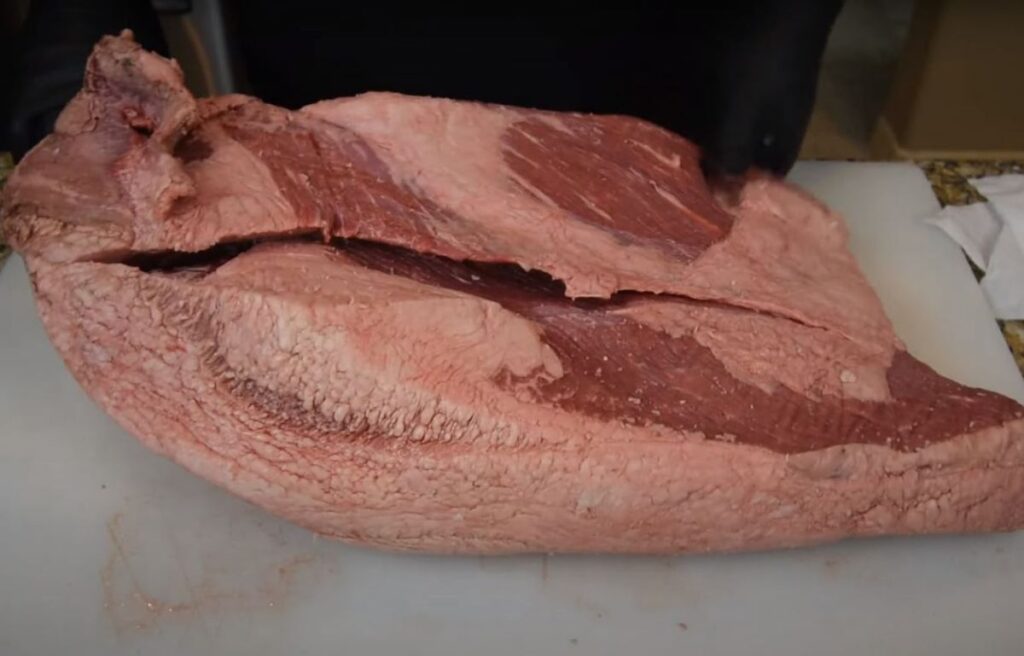
A brisket has a huge amount of fat content and marbling throughout the meat, especially its point end, which is cut from a whole packer.
Conversely, as a tri-tip is a leaner meat cut, it has some marbling over its surface but not as much as a brisket.
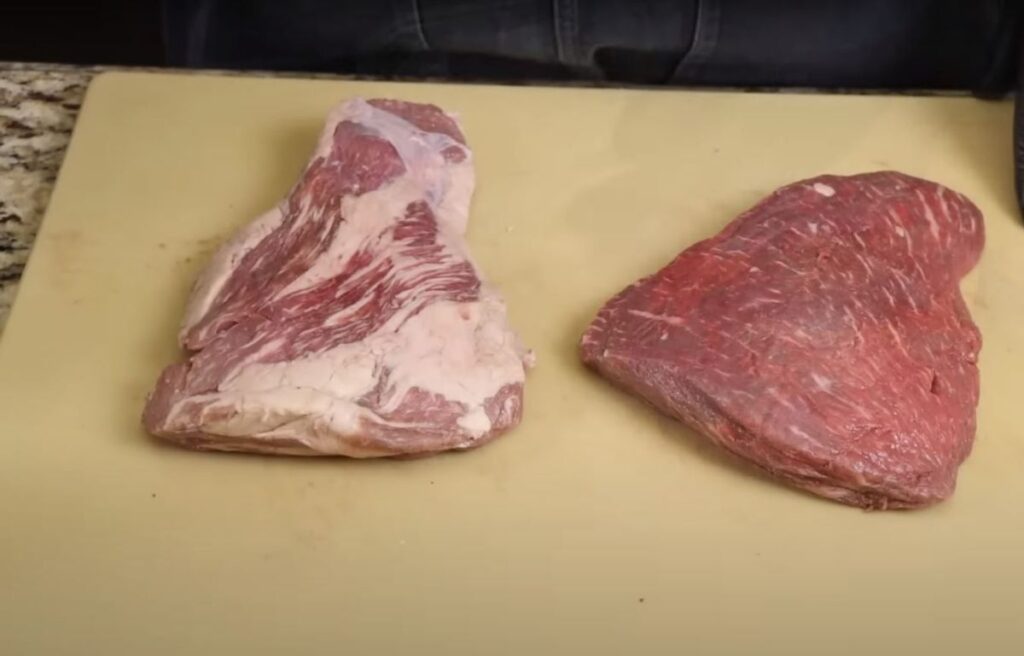
Suitable For Beginners
Tri-tip is more suitable for beginners because it is a small meat cut with fewer tough connective tissues.
Ultimately, whether you cook it at a lower or higher temperature, its cooking session is relatively shorter and does not require much attention and skills.
But brisket has a larger size and obtains plenty of connective tissues, which is why it needs an extensive smoking session, patience, temperature-maintaining skills, and close monitoring to achieve the desired results.
Cooking Method & Duration
It is another notable difference between these two types of meat. Due to the hardness and larger size of brisket, it requires a longer cooking duration and a specific slow-cooking method, such as low and slow smoking, to achieve optimal tenderness and flavor.
Let’s say you have a brisket that weighs around 12 pounds, and you smoke it at 200 degrees Fahrenheit; you can expect it to take around 20 hours. But, you can increase the temperature after some time to about 250 °F to finish the smoking process relatively quicker.
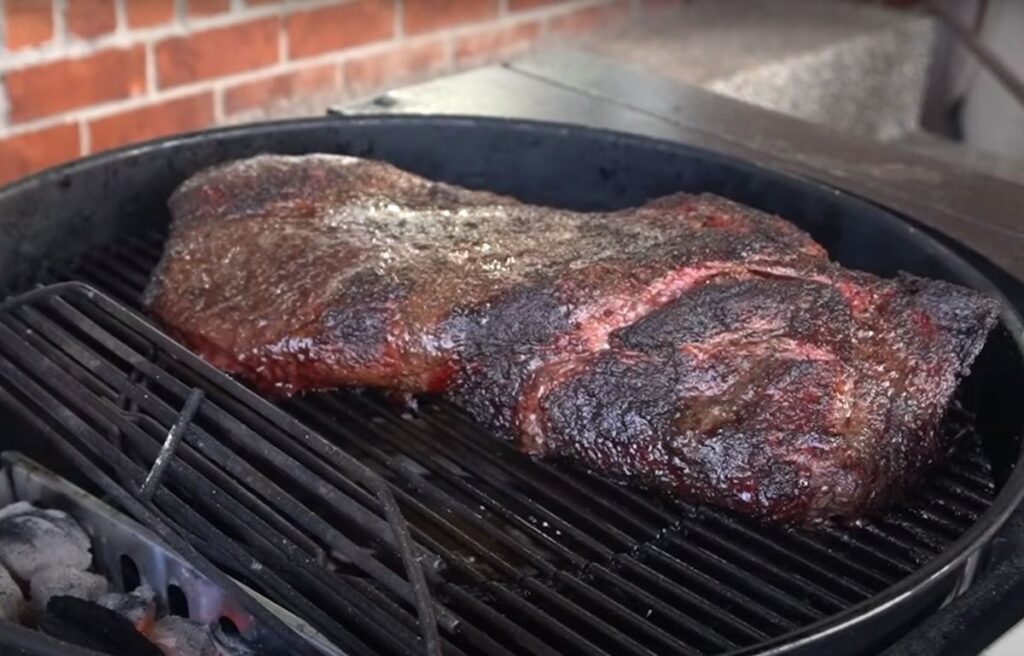
If I talk about the tri-tip and its cooking method and duration, it is a leaner meat, making it more suitable for high-heat grilling, but you can also smoke it at a low and slow temperature.
Suppose you choose to grill a tri-tip at 300 to 400 °F over direct heat; it can be ready within 20 to 40 minutes, depending on the meat’s size and your desired doneness level.
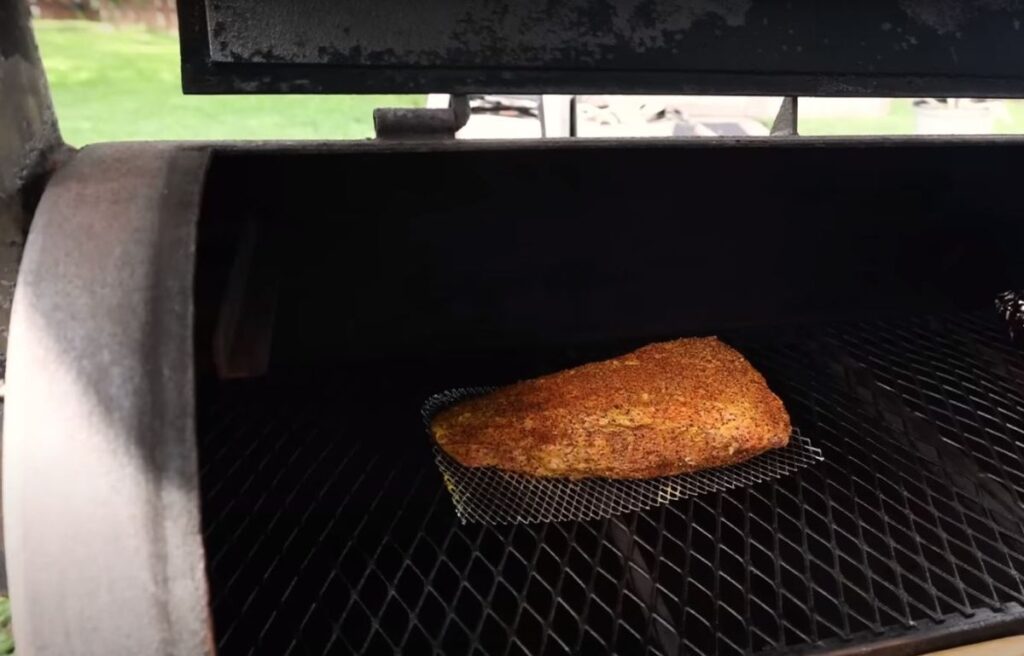
However, if you try smoking it at a low and slow temperature, like 250 °F, it can take 30 minutes per pound and 1.5 hours of smoking for a 3-pound tri-tip.
To conclude, smoking is an ideal cooking method for brisket, while a tri-tip can be cooked through both grilling and smoking, but the first method is the preferred one, and the duration would be much shorter than cooking a brisket.
Outcome Analysis
Starting with the popular question, which is more tender, tri-tip or brisket? A tri-tip is more tender than a brisket when cooked to perfection because it is a leaner cut with fewer tough connective tissues, which results in softer to-eat meat.
Secondly, a brisket overcomes tri-tip in terms of juiciness because it contains much more fat content. Also, hours of slow smoking gradually renders down the abundant fat, keeping it juicy and moist till the end of the cooking process.
If I talk about the flavor profile of these two beef meat cuts, brisket tends to be more flavorful than tri-tip mainly because of rich marbling and low and slow smoking process.
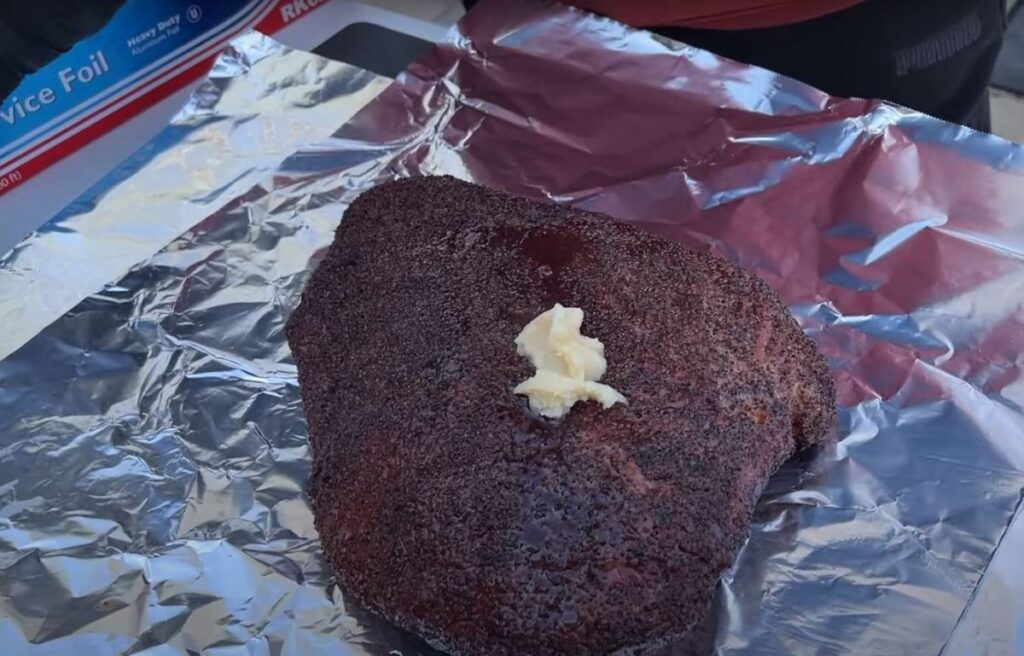
Also, smoking is usually done through fuel sources like charcoal, wood pellets, and wood chunks that add an extra layer of smoky flavor to the meat.
If you smoke a tri-tip, it develops a balanced beefy flavor, whereas a perfectly smoked brisket promises a robust beefy flavor.
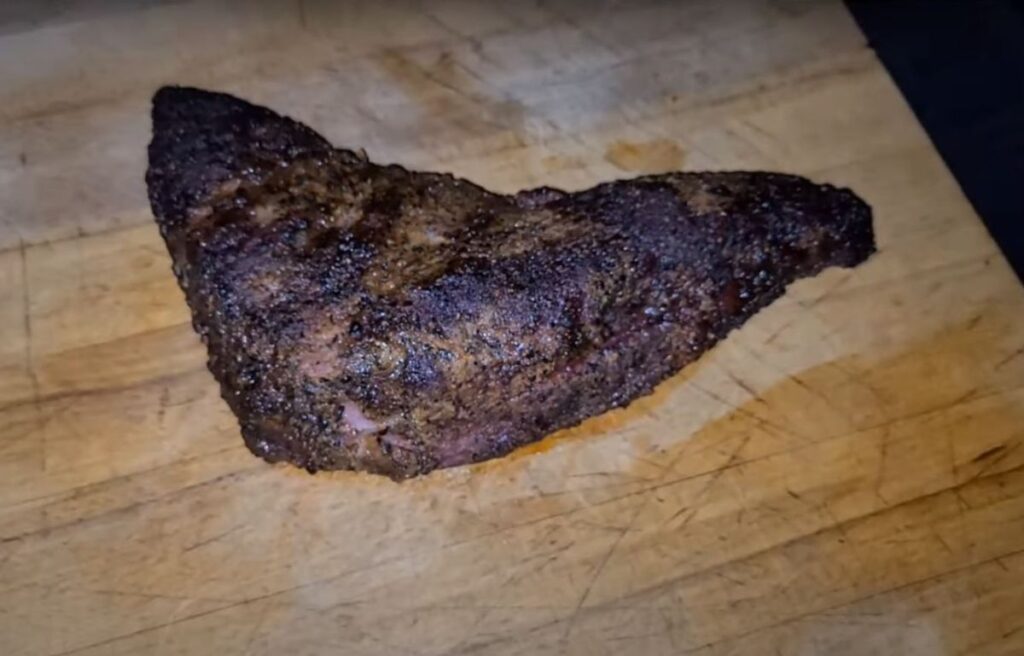
Lastly, the texture of these two meat cuts depends on their cooking method, cooking temperature, and the presence of fat and connective tissues.
Perfect Internal Temperature For Brisket And Tri-tip
If you want to ensure rich flavors and maximum tenderness and juiciness inside your beef brisket, I recommend cooking until it reaches an internal temperature of 195 to 205 °F.
On the other hand, a tri-tip provides desired results when its internal temperature is between 135 to 145 °F.
But remember that everyone has different preferences when it comes to the level of doneness in their meat. So, the meat’s internal temperature can vary.
How Long To Rest A Trip Tip And A Brisket?
Due to the larger size, a brisket requires a longer resting period of at least 30 minutes, but I advise 1 to 2 hours for enhanced flavors and deliciousness. There are several ways to rest it, but the cooler technique offers better results among all.
As tri-tip is a leaner cut of meat and cooks pretty faster, therefore, it requires less resting duration. So, probably 10 to 15 minutes would be enough to complete its resting procedure.
Also, it does not require any extra accessories like a cooler, and you can easily rest it on the countertop after folding it nicely inside an aluminum foil.
Top Tip by FaveGrills
If you choose to smoke brisket and prefer an extra layer of flavor and moisture in it, I recommend using a beef broth or marinade injection. You simply need to inject the liquid throughout the meat for at least 1 or 2 hours before smoking.
Brisket Vs Tri Tip – A Quick Comparison
See the table attached below to understand which meat overcomes the other in different aspects.
| Factor | Winner |
|---|---|
| Tenderness | Tri Tip |
| Juiciness | Brisket |
| Flavorful | Brisket |
| Beginner-Friendly | Tri Tip |
| Shorter Cooking Duration | Tri Tip |
| Suitable For Smoking | Both |
| Suitable For Grilling | Tri Tip |
| Budget-Friendly | Both |
Final Thoughts – Which One To Choose, Tri Tip Or Brisket?
Whether to choose a brisket or a tri-tip steak entirely depends on your personal preferences and some other key factors.
So, if you are looking for a leaner meat cut that you can cook faster (30 minutes to 1.5 hours) at a higher temperature and offers plenty of tenderness with a beefy taste, I recommend purchasing and cooking tri-tip.
In contrast, brisket is a suitable option if you have a big family, have good experience in low and smoking, can wait for several hours while their meat cooks, and prefer maximum tenderness and juiciness with rich smoky flavors.
So, go through all the information I have provided, and I believe you’d be able to understand which meat cut is more suitable for your cooking requirements and why.
Have A Great Barbecue Session!
Your Opinion Is Valuable To Us
I have highlighted all the key differences between a brisket and tri-tip to help you understand which one is more suitable for you. Lastly, use the comments box below to share which meat cut you’d choose and why?
Frequently Asked Questions
Is brisket cheaper than tri-tip?
Based on per-pound raw meat, A tri-tip can be twice as expensive as compared to brisket, but it’s essential to note that a brisket produces less meat after cooking, which is why the cost per cooked pound can be near to similar for both cuts.
What are some of the best side dishes to serve with tri-tip and brisket?
With tri-tip, you can consider serving onion soup, green beans, roasted veggies, and grilled mushrooms, whereas a brisket dinner becomes more delectable with apple slaw, baked beans, vinaigrette, and plant-based taco.
How to store tri-tip after cooking?
After you’ve cooked tri-tip, let it cool first and then wrap it tightly in aluminum foil and store it in the refrigerator within 2 hours. Also, I suggest consuming it within 3-4 days and reheating thoroughly before serving.

